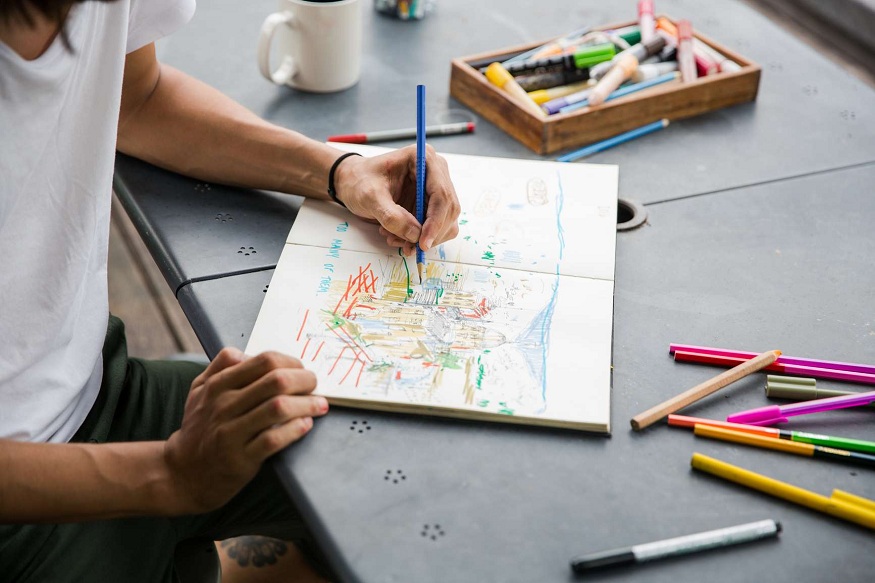This translates into sadness, lack of interest, loss of pleasure or even a feeling of worthlessness. By challenging the mind instead of making it think, drawing, which is one of the activities of art therapy, can help those affected to manage their depression.
What are the main principles of art therapy? How can drawing help in practice to fight depression? Here are our explanations.
What is art therapy?
Art therapy, also called creative arts therapy or expressive arts therapy, is an original paramedical scientific discipline, practiced on all continents, which consists of using art for therapeutic purposes.
This is based on the idea that the creative arts can have a therapeutic effect. It can allow sick people to express:
allow you to focus on the art and not on what causes anxiety, depression or stress.
Whatever the chosen creative activity, among the many possibilities, the objective is to allow the patient, through his artistic production and the momentum put in place on this occasion:
to mobilize physically and mentally.
Make your well-being assessment!
Miracle Routine
What are the benefits of drawing in particular?
Art therapy brings together all artistic disciplines such as:
Drawing, in particular, allows the patient, by observing the way of structuring space, arranging shapes, using colors and associating ideas, to:
How does an art therapy session take place?
The purpose of the process is not artistic. The therapeutic approach consists of gradually letting one’s inner images emerge, which can be as much the reflection of past experiences as of dreams to which one aspires. In the same spirit, he asks:
The images or forms thus created, in addition to revealing certain aspects of oneself, can generate a new vision and behaviors that will contribute to physical or emotional healing.
An art therapy session takes place:
in a friendly and comforting place, which more often resembles an art studio than a therapist’s office, or even at home.
Before undertaking the work of creation, the art therapist seeks to define the motives and the therapeutic objectives which lead the patient to follow a therapy in order to better guide him. Then, he gives him technical advice relating to the chosen techniques and encourages him to express himself by visually representing what he has decided to invest in. A few sessions may be enough to identify the problem. The therapy can also extend over a larger number of encounters.
An art therapy session can last one to two hours and is organized around three main points in permanent interaction:
expression: learning to communicate with the art therapist in individual sessions and with the other participants in group workshops around an artistic theme or expressing oneself through the indirect route of art;
artistic creation: organizing and structuring one’s thoughts, to create a work that makes sense;
reflection on his creation: put words on his feelings and his emotions.
The end of the session gives rise to a verbal exchange between the practitioner and his patient. After having completed his production, the latter is thus invited to talk about what he felt during the creation, about what it suggests to him. He is also invited to rely on the therapy and the experience he draws from it to initiate a change
relaxes the mind;
challenges the mind instead of making it think, worry or feel depressed.
It should be noted that various artists, such as James F. Regan or DestinyBlue, use drawing to fight their depression and bear witness to their torments and emotions by imagining, for example, comics on different aspects of life such as:




